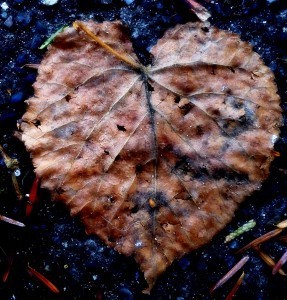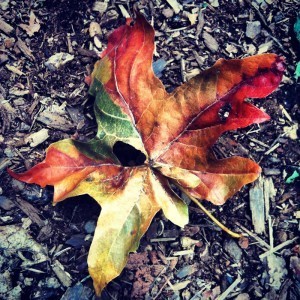Christine Valters Paintner's Blog, page 152
March 23, 2014
Invitation to Dance: Return to Me with Your Whole Heart
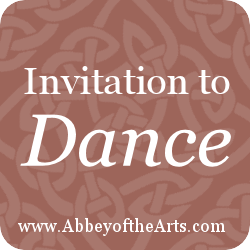 We continue our theme this month of "Return to me with your whole heart" through the practice of dance (please visit our Community Lectio Divina practice, Invitation to Photography, and Invitation to Poetry which all explored this theme for March).
We continue our theme this month of "Return to me with your whole heart" through the practice of dance (please visit our Community Lectio Divina practice, Invitation to Photography, and Invitation to Poetry which all explored this theme for March).
I invite you into a movement practice. Allow yourself just 5-10 minutes this day to pause and listen and savor what arises.
Begin with a full minute of slow and deep breathing. Let your breath bring your awareness down into your body. When thoughts come up, just let them go and return to your breath. Hold the theme of returning to God with your whole heart gently in your awareness, planting a seed as you prepare to step into the dance. You don't need to think this through or figure it out, just notice what arises. The song asks, "have you forgotten who you are?" Let dance guide you on the return journey.
Play the piece of music below ("Forgotten" by Deirdre Ni Chinnéide, a musician who lives on the island of Inishmore here in Ireland) and let your body move in response, without needing to guide the movements. Listen to how your body wants to move through space in response to your breath. Remember that this is a prayer, an act of deep listening. Pause at any time and rest in stillness again. Sit with waiting for the impulse to move and see what arises.
After the music has finished, sit for another minute in silence, connecting again to your breath. Just notice your energy and any images rising up.
Is there a word, phrase, or image that could express what you encountered in this time? (You can share about your experience, or even just a single word or image in the comments section below or join our Holy Disorder of Dancing Monks Facebook group and post there.)
If you have time, spend another five minutes journaling in a free-writing form, just to give some space for what you are discovering.
To extend this practice, sit longer in the silence before and after and feel free to play the song through a second time. Often repetition brings a new depth.
)
*Note: If this is your first time posting, or includes a link, your comment will need to be moderated before it appears. This is to prevent spam and should be approved within 24 hours.
March 20, 2014
Monk in the World guest post: Asther Bascuna-Creo
This week in our Monk in the World guest post series we have two beautiful poems from fellow monk and artist Asther Bascuna-Creo who lives in Australia. Read on for her wisdom about silence and the contemplative path:
Silence
And in her middle years
she discovers silence.
Not the kind you find
In a remote abbey nor
on a grand cathedral,
Not the type you seek
in silent retreats
nor in places of meditation.
But the sitting down
in the kitchen bench type
The standing in front
of the stovetop type
The folding the week’s washing type
While dinner sizzles over fire
While the washing piles up high
While kids with sticky hands
Ask the day’s hundredth ‘why.’
And this silence overcomes all noise
And this silence surpasses all haste
And this silence provides her peace
A peace that passeth all understanding.
—Asther Bascuna-Creo
What does it mean to be an artist and monk in the world?
What does it mean for me to be an artist
and a monk in the world?
It means to not reject the existence of darkness
To not mask the images of injustice
To not turn back from pictures of poverty.
But to depict beauty
To discover the hope beyond despair
To advocate simplicity in the midst of excess
To capture silence in the midst of noise
To bring rest amidst hurry
To inspire peace among chaos
And in the face of the bleakness of winter
To announce the coming of spring.
—Asther Bascuna-Creo
 I live in Melbourne, Australia with my husband and three children. I received my primary to secondary education in a school offering the Benedictine tradition, and so have always felt a personal connection with St Benedict. For the past couple of years, as my husband was undergoing his own formation as a candidate for the permanent diaconate in the Archdiocese of Melbourne, I have been going through my own personal rediscovery of St Benedict's teachings. I am a writer and a communications professional working in the academic sector.
I live in Melbourne, Australia with my husband and three children. I received my primary to secondary education in a school offering the Benedictine tradition, and so have always felt a personal connection with St Benedict. For the past couple of years, as my husband was undergoing his own formation as a candidate for the permanent diaconate in the Archdiocese of Melbourne, I have been going through my own personal rediscovery of St Benedict's teachings. I am a writer and a communications professional working in the academic sector.
Click here to read all the guest posts in the Monk in the World series>>
Monk in the World guest post: Hana Truscott
I am delighted to share another beautiful submission for the Monk in the World guest post series from the community. Read on for Hana Truscott's wisdom about showing up in the world and where it has taken her:
REFLECTION
“Ten thousand hours felt like ten thousand hands.
Ten thousand hands, they carry me.”
My monk in the world mantra is “show up.”
The more hours I show up for my daily practice of being a monk in the world, the more my “monkness” carries into other facets of life. I was recently inspired by the lyrics above from the song 10,000 Hours by Macklemore and Ryan Lewis. It took these two musical artists over 10,000 hours of practice before they were able to break through into greatness. Their song is an invitation for us to put in the hours pursuing our art, our passion, our love, and those hours will be like hands that will carry us through. I have put in nowhere near 10,000 hours of intentional contemplation on my journey as a monk in the world, yet I’m already experiencing breakthroughs and transformations. I can only imagine what 10,000 hours might bring!
To be a monk in the world used to mean showing up every day for my 20 minutes of Centering Prayer. It is a practice I was introduced to five years ago through my aunt, who teaches classes at Fr. Thomas Keating’s Contemplative Outreach center in Denver, Colorado. The fruits of the Centering Prayer practice unfold over time, so I had to learn to trust the process. The only thing I had control over was showing up each day. In the five years that I have been doing this practice, there have been only two times during Centering Prayer where I have experienced pure, peaceful bliss. The rest of the time I’m constantly wrangling with my thoughts (I mean gently letting thoughts go and returning to my sacred breath). But I still show up.
Over time, my monk mantra has slowly seeped into other facets of life.
Twenty-eight months ago I showed up in the Republic of Macedonia as a Peace Corps Volunteer. After three months of intensive Macedonian language, professional development, and cultural training, I was assigned to a small village of 1,000 people five miles north of the Greek border. In preparation for my service, I was told that it may take me a year or more to accomplish or do anything significant. My first task (i.e. my first year) was to build trust in the community through lots of listening, observing, and honing language skills. As an American who takes pride in efficient work and high productivity, it was a struggle for me to learn to let go of outputs and simply show up and “be” in the culture. Indeed, it took me thirteen months (10,000 hours, surprise!) to finally hit my stride.
Looking back at my effectiveness as a new Peace Corps Volunteer, the most important thing I did through all those months and hours was to show up and be present. I showed up at work day after day even though I didn’t have anything specific to do. I showed up for coffee with colleagues and neighbors and even strangers. My greatest success has come from being present to the community, which has gradually emboldened my Macedonian colleagues and empowered my newfound friends to take action for their own community development ideas. I’m now beginning my third year of Peace Corps service in the same village. The projects I’m involved with are ones I had envisioned from the beginning. But instead of me pushing my own agenda, these projects arose from the community and are being implemented by the community. I am here to support them. Thus my mantra for effective community development work as a Peace Corps Volunteer in Macedonia has become “show up.”
Another area that my monk mantra seeped into last year is health and fitness. Instead of giving up on fitness when results weren’t immediate, I decided to “show up” day after day. On my thirtieth birthday last February, I started using Jillian Michaels’ 30 Day Shred workout video. As my thirty-first birthday rounds the corner, I’ve completed over 120 of those workouts and I’m feeling great. For someone who loved the outdoors and never thought she could ever have the attention span to do one home DVD workout, let alone 120 of them, I am feeling amazing. All it took was showing up, which will continue to be a mantra for my health and fitness.
Throughout my Peace Corps service, my monk mantra for centering prayer has seeped into my work and my health. My prayer for my thirtieth birthday was to cultivate my mind, body and soul. Now as I look ahead towards a new year, my prayer is to cultivate my life passion – a recent revelation. My life passion is to be a writer. I’m slowly starting to “show up” for writing practice, albeit it’s a struggle! I have no doubt that this permeation of my monk mantra into my everyday life is a fruit of the commitment to my monastic practice. It began with centering prayer and has expanded to mind, body, soul and now passion. This is where the hands of those many hours of showing up as a monk in the world have carried me. And I look forward to the many hours ahead.
 Hana is a creative non-fiction writer building a repertoire of life experience. She shares her wanderlust-fueled adventures and contemplative insights on her blog http://hanatruscott.blogspot.com. She currently resides in Macedonia as a Peace Corps Master’s International student through the University of Denver.
Hana is a creative non-fiction writer building a repertoire of life experience. She shares her wanderlust-fueled adventures and contemplative insights on her blog http://hanatruscott.blogspot.com. She currently resides in Macedonia as a Peace Corps Master’s International student through the University of Denver.
Click here to read all the guest posts in the Monk in the World series>>
March 17, 2014
Dancing St. Brendan (a love note from your online Abbess)
It is the man throwing away his shoes
as if to enter heaven
and finding himself astonished,
opened at last,
fallen in love with solid ground.
—David Whyte (excerpt from "The Opening of Eyes")
Dearest monks, artists, and pilgrims,
 Today is the Feast of St. Patrick, a national holiday here in Ireland, and quite a time of celebration. I admit that I have some mixed feelings about Patrick, in part because the celebrating is often an excuse to drink heavily, and because there are so many amazing Irish Saints, but Patrick gets most of the focus (and he wasn't even Irish), and there is much evidence Christianity was already being practiced here before his arrival. Regardless, it is a perfect day to celebrate the many gifts of Ireland.
Today is the Feast of St. Patrick, a national holiday here in Ireland, and quite a time of celebration. I admit that I have some mixed feelings about Patrick, in part because the celebrating is often an excuse to drink heavily, and because there are so many amazing Irish Saints, but Patrick gets most of the focus (and he wasn't even Irish), and there is much evidence Christianity was already being practiced here before his arrival. Regardless, it is a perfect day to celebrate the many gifts of Ireland.
So it seemed appropriate that Marcy Hall would finish the next dancing monk icon in the series of one of my favorite Irish saints (the other being Brigid), Brendan the Navigator, a monk of the 5th-6th centuries who went on an extensive journey by sea in search of the Garden of Eden. One of the legends say that he celebrated Easter Mass on the back of a whale. Another legend says he was the first European to reach North America.
I watched the movie "Gravity" the other night (with Sandra Bullock and George Clooney – spoiler alert!) If you aren't familiar with it, it is the story of astronauts who encounter disaster on a routine spacewalk and find themselves hurtling through space, untethered. It was well done and many touching moments where the two main characters confront their own mortality again and again. Perhaps most moving to me was the very end, when Dr. Stone's capsule lands in a body of water. She swims to shore and when she reaches land, she is overcome with the joy of being on solid ground again.
I was reminded of another film, "Wings of Desire" by German director Wim Wenders about two invisible, immortal angels offering comfort on the streets of Berlin. One of the angels finds himself longing for an embodied life of getting newsprint on his fingers and experiencing the many sensory delights of being human. The lightness of angelic life has become unbearable. He longs to feel the weight of things.
Then I imagine St. Brendan and his long voyages by sea, riding the waves and storms, and feeling the rise and fall of the ocean. I wonder how he felt reaching solid ground again. I wonder if he fell to the ground and sang praise for the beauty of being able to walk on the earth.
One of the many things I love about Celtic spirituality is its earthiness. The spiritual life can become too much about seeking the spiritualization of all things, of seeking to be lifted from the ordinariness of daily life. What the Celtic monks teach us is that our earthiness is so very good. They wrote blessings for all the tasks of daily life, so that waking, and milking cows, and leaving on journeys, are all celebrated as gifts of our humanity.
This season of Lent might tempt us to seek lofty goals and rise above the very ordinary life we find ourselves in. But then we are called to remember once again the ashes marked on our foreheads, the dust and earth from which we emerge and to which we shall return, and we might discover that the grace of this season isn't so much a sublime encounter with angelic beings, or being lifted from our lives into a state of endless rapture, as it is seeing our lives with new eyes.
The return to God called forth from us for this season doesn't demand a long journey to the heavens. It is perhaps even more demanding than that. It invites us to plunge ourselves right into the heart of our lives here and now and to bless this as holy: the dog having an accident on the rug, the child up sick in the night, the terrible ache and exhaustion we feel from so many hours working, another dawn and dusk, bouquets of spring tulips, a warm embrace just when we needed one, this fragile earth upon which we stand.
This is the call of the monk in the world, a phrase which arises from the belief that the holiness of the monk's path comes precisely from this wonder and awe we might open ourselves to right in this moment, whatever this moment might bring. It is, as David Whyte writes in his poem, not the expected ascent to heaven, but the falling "in love with solid ground."
We have our first group of pilgrims arriving this week for our Ireland pilgrimage. Please send them your prayers, that on this journey, they might fall in love with their lives in new ways and come to bless the earthiness of being human. (If you feel the call to join us, we will have 2015 dates announced in about a month).
If a faraway journey isn't on the horizon right now, consider joining us for Way of the Monk, Path of the Artist, a 12-week online journey through my book The Artist's Rule. Staring just after Easter, limited to 20 participants (over half full now!) for more intimacy and community, and facilitated by two of our amazing helper monks, over and over folks have told me what a transformative journey this was and you don't have to leave home.
We also have a new Invitation to Poetry posted on the theme of "Return to me with your whole heart" and another fabulous Monk in the World guest post by fellow monk Kevin Peterson.
And if you have wanted to order some of our previous dancing monk icons as prints, your last chance to order is TODAY, March 17th! As Marcy paints more, we will make those available in the future as well, but for now this is your chance to have a copy of St. Benedict, Hildegard, Brigid, and Mary.
With great and growing love,
Christine
Christine Valters Paintner, PhD, REACE
www.AbbeyoftheArts.com
Art by Marcy Hall: Dancing St. Brendan
March 16, 2014
Invitation to Poetry: Return to me with your whole heart
Welcome to Poetry Party #76!
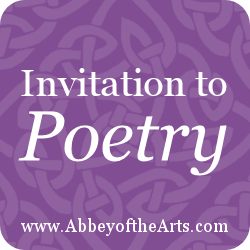 I select an image (*photo above by PhotoJoy Photography) and suggest a theme/title and invite you to respond with your own poem. Scroll down and add it in the comments section below or join our Holy Disorder of Dancing Monks Facebook group and post there.
I select an image (*photo above by PhotoJoy Photography) and suggest a theme/title and invite you to respond with your own poem. Scroll down and add it in the comments section below or join our Holy Disorder of Dancing Monks Facebook group and post there.
Feel free to take your poem in any direction and then post the image and invitation on your blog (if you have one), Facebook, or Twitter, and encourage others to come join the party! (If you repost the photo, please make sure to include the credit link below it and link back to this post inviting others to join us).
We began this month with a Community Lectio Divina practice with wisdom from the prophet Joel and followed up with our Photo Party on the same theme. (You are most welcome to still participate). We continue this theme in our Poetry Party this month.
The text with which we are praying this month is read every year on Ash Wednesday. "Return to me with your whole heart" are a powerful words to begin the sacred season of Lent. What if we were to imagine Lent as less about sacrifice, and more about making the great return to God. The photo above, shared by fellow monk in the world Joylynn Graham at this month's Photo Party, shimmers with the sacredness of our great and final return to God. Holding this reality in our awareness can offer us the impetus to turn back to the Source in our lives moment by moment. The ancient monks knew that the awareness of our death, smudged on our foreheads at Ash Wednesday, has the effect of deepening our appreciation for life.
You can post your poem either in the comment section below*or you can join our Holy Disorder of Dancing Monks Facebook group (with more than 1300 members!) and post there.
*Note: If this is your first time posting, or includes a link, your comment will need to be moderated before it appears. This is to prevent spam and should be approved within 24 hours.
March 13, 2014
Monk in the World guest post: Kevin Peterson
I am delighted to share another beautiful submission for the Monk in the World guest post series from the community. Read on for Kevin Peterson's wisdom about practicing the presence of God in the tasks of daily life:
Being a monk in the world…what does that mean to me?
When Christine asked me to consider writing about being "a monk in the world" I was at once excited and apprehensive. What do I have to offer to this tremendous conversation on the contemplative life that wouldn't be better said from someone else? What could I possibly say that would be profound or inspiring? I looked at the "Monk Manifesto" and thought about the commitment I made to practicing each item, then on to which of them I do well(times of solitude and silence) and which I struggle with (Radical acts of hospitality/cultivating community) but that was too broad in the space allotted so I went to work on what else I could offer.
I started with simply copying the invitation from the Abbey of the Arts onto a blank piece of paper, and then ruminated on the words of it, what was really being asked? I read many of the previous installments to hear the wise words of those before me, I ruminated some more, allowing the ideas and rhythms of the language to roll around free in my noggin. After several days of this I made a list, on the same piece of paper, of all the things in my life that I've done under the topic of contemplation, I became a bit dismayed for a pattern of life started to show itself there in black and white….I like to dabble…to try many many things…I like to dabble a lot! The list was overwhelming.
So I went back to the invitation and one of the invitational suggestions was to limit to a single practice or life event, a daunting task as I then made a list of significant life events from dropping out of high school to getting married at 17 to working as a jail cook to becoming a Christian to getting a job at a large high-tech company to running a non-profit to brain trauma to leading marriage groups to raising 3 kids, their marriages, family illnesses, grandkids, 33 years of marriage, etc etc etc. So I ruminated some more, looking at the page periodically throughout the week, waiting for something to stand out, to speak, to hear what God would want me to share.
Then in a flash I (sort of) remembered a quote from Brother Lawrence in The Practice of the Presence of God something like this "even as I turn the little omelet, I do it with and for God". I was a professional cook for many years so his life and description of life resonated. With this in mind I pulled up a PDF copy of the book (stored in the vast multitude of things collected on my computer over the years) and while looking for the quote I was struck at the reading before me….here was what turned me on to my life practice over 30 years ago, I was struck dumb looking at the pages and realizing that here is the overarching practice that I've been doing (sometimes well, sometimes not) that has enhanced/enlightened all the dabbling.
After reading his little book when I was a new Christian I took it at face value and began practicing the presence of God in everything I do, speaking continually to him as I go about my day, asking his help as I do jobs that are well outside my education level or skill, deal with people that are difficult and/or from a whole different universe.
Throughout the day and night, calling my thoughts back to God and a present conversation with Him, often repeating little prayers/request/praise as I go about my tasks (please don't let me screw this up, make me a blessing to my boss today, etc). At times, when life was the most hectic and overwhelming, I would start with a list of grievances or request for relief, only to find myself overflowing in praise.
I'd be cooking my little heart out during a dinner rush and actually dancing and singing with the orders flying out of the kitchen. Another time I went to pick up my paycheck and realized it wasn't even half of what I needed to pay the bills and I started the conversation on the drive home, after a few miles of my complaining/worrying I found myself in a rapturous emotion desiring to roll down the windows and shout how good God was. Times were hard, very hard but God was so real and available and awesome. Through this practice of continual touching of bases with God in everyday moments I learned to slow down, to take the blows of life in stride, to allow things to ruminate in my noggin, to be at peace.
Here is a quote of someone who knew Bro. Lawrence that really puts things in my current life in perspective as they are words I often hear from people to describe me (which was not the case 30 years ago):
It was observed, that even in the busiest times in the kitchen, Brother Lawrence still preserved his recollection and heavenly-mindedness. He was never hasty nor loitering, but did each thing in its turn with an even, uninterrupted composure and tranquility of spirit. "The time of work," said he, "does not with me differ from the time of prayer. In the noise and clatter of my kitchen, while several persons are at the same time calling for different things, I possess God in as great a tranquility as if I were upon my knees at the Blessed Supper."
From this lifetime of practice I have gained wisdom and confidence. I seem to be have stripped that little gear that says I can't do something or that I should be afraid or that I'm not worthy. It has freed me to step into amazingly varied situations and needs in life, to speak with calm wisdom into situations, to grasp that God really is in control and its OK.
Recently it has also allowed me to explore the creative, to write contemplative poetry, to make art, to challenge the edges and limits of my life, to find space in new groups of people(like the Holy Disorder of Dancing Monks) and really BE in the world.
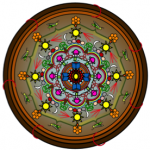
 Kevin Peterson is a process engineer who lives in Portland with his wife of over 33 years, an active member of Sunset Covenant Church and VP of NorthWest Outreaches. He combines contemplative practices with poetry and art. Samples can be found on his website: www.kevinandnancypeterson.blogspot.com/ (contact Kevin.Peterson@intel.com)
Kevin Peterson is a process engineer who lives in Portland with his wife of over 33 years, an active member of Sunset Covenant Church and VP of NorthWest Outreaches. He combines contemplative practices with poetry and art. Samples can be found on his website: www.kevinandnancypeterson.blogspot.com/ (contact Kevin.Peterson@intel.com)
Click here to read all the guest posts in the Monk in the World series>>
March 11, 2014
Heart-Centered Practice (a love note from your online Abbess)
To receive this love note straight to your in-box, subscribe here (and also receive a gift!)
Dearest monks, artists, and pilgrims,
"Return to me with your whole heart." This is the image and invitation with which we are resting for Lent at the Abbey (see our community lectio divina and this week's invitation to photography).
Lent is an invitation toward whole-heartedness. The heart is an ancient metaphor for the seat of our whole being – to be whole-hearted means to bring our entire selves before God, our intellect, our emotional life, our dreams and intuitions, our deepest longings.
Many of us feel divided, in internal conflict between what we most desire and how we live our lives. The ancient monks described the "cave of the heart" as that inner place where we encounter God and wrestle with our inner voices. Instead of resisting these voices, and dividing ourselves, the desert mothers and fathers invite us to be fully present to them, to create a welcoming space within.
All of our "negative" feelings have something to teach us about ourselves and even about God when we stop running and create room in the cave of our hearts to tend to what is really happening in us. We become aware of our interior dynamics and slowly becoming attuned to the promptings of our inner wisdom and respond to life through this lens, discovering God in each moment both within and without.
Lent is a time when we consider the commitments we want to make to cultivate our whole-heartedness and the things we want to let go of to make more room for presence to God. The desert journey is one where our comforts are stripped away so we can see more clearly.
What are the things which numb your heart from really feeling life?
How do we make space in the midst of busy lives to experience this whole-heartedness?
I invite you into a very simple Heart-Centered Practice which only takes about 5-10 minutes and can be done almost anywhere, but can completely shift your grounding and awareness so you respond to the world from a more heart-centered place:
Begin by becoming aware of your body. Notice how your body is feeling, simply being present to sensations you are experiencing, welcoming in both the body's delight and discomfort.
Connect to your breath, deepening it gently. As you inhale, imagine God breathing life into you. As you exhale, allow yourself to experience a moment of release and surrender into this time and place, becoming fully present. Take a couple cycles of breath to simply notice this life-sustaining rhythm which continues moment by moment even when you are unaware of it.
In your imagination, gently allow your breath to carry your awareness from your head (which is your thinking, analyzing, judging center) down to your heart center (where you experience life from a place of greater integration, feeling, and intuition). Consider placing your hand on your heart to experience a physical connection with your heart center and draw your awareness to this place.
Breathe into your heart center and begin to notice what you are feeling right now in this moment without judging or trying to change it. Take a few moments to simply be present to whatever it is you are feeling and making some room within yourself to experience this without pushing away (this alone can be revolutionary for many of us – to just allow ourselves to have the experience we are having without judgment).
Call to mind the spark of God which the ancient monks and mystics tell us dwells in your heart. Bring the compassion of God to however you are feeling right now, not trying to change anything, but just gently holding yourself in this space.
As you experience yourself filling with compassion for your own experience, imagine breathing that compassion out into the world and connecting to other hearts – both human and animal – beating across the world in a rhythm of love.
Gently allow your breath to bring your awareness back to the room and take a moment to name what you noticed in this experience.
This practice is especially powerful when we find ourselves feeling tenderhearted, anxious, sad, or any emotion which feels uncomfortable or confusing. The idea is not to resolve the emotion or figure it out, but to simply allow it to have a moment of space within us without pushing it away. Resistance is a powerful and often subtle force in our lives.
Try pausing once or twice a day for this practice in the next few days and see if you discover anything. What do you discover about returning with your whole heart?
I offer you here a recorded version of this meditation (you can listen to it online or download it)
If you missed my post last week for Ash Wednesday on "A different kind of fasting" you can find it here.
We have a new Invitation to Photography posted on the theme of "Return to me with your whole heart" and another fabulous Monk in the World guest post by fellow monk Liz Rasmussen.
With great and growing love,
Christine
Photo by Christine: Heart Leaf
March 10, 2014
Abbey Bookshelf: ‘The Wisdom Way of Knowing’ by Cynthia Bourgeault
There are so many rich resources on the contemplative life available to us. Here at the Abbey we are going to start offering an occasional review of books we think are especially worth exploring, starting with The Wisdom Way of Knowing: Reclaiming an Ancient Tradition to Awaken the Heart* by Cynthia Bourgeault.
This review is written by long-time fellow monk in the world Edith O'Nuallain:
This book, penned by a modern day mystic and internationally known writer and teacher, offers a clear and concise introduction to Wisdom teachings as they manifest across a variety of faith traditions. Though its primary locus of practice is based on Christian monastic traditions, specifically Benedictine monasticism, the author, Cynthia Bourgeault, imbues her teachings with flavours from other sources, most notably Sufism and Gurdjieff’s ‘Work’. Bourgeault identifies Jesus as a “moshel meshalim”, a master of Wisdom teaching. Few of us are familiar with this face of Jesus.
Bourgeault begins by defining Wisdom as the “science of spiritual transformation” which includes a theory of cosmology – “a vision of human purpose”, presented along with a systematic training practice, which ultimately leads to an awakened heart. While elements of Wisdom teaching have been evident in all the world’s major religions, none contain a complete and whole Wisdom cosmology. Bourgeault’s significant contribution is to pull together many of the missing pieces of the puzzle, pieces which have gone underground over the centuries, but never completely disappeared.
Bourgeault distinguishes between ordinary, egoic, ‘dual’ mind, on the one hand, and unified, transcendent consciousness, on the other. The aim of Wisdom teachings is to effect spiritual transformation, a process which involves moving our awareness from its focus on ‘lower’ or ego based thinking and feeling, to ‘higher’ or awakened heart. Since we cannot access Wisdom with our minds on their own, the ‘first principle’ of awakening is to bring the entirety of one’s being to the table, including our hearts, bodies and minds. The gateways to enlightened perception include “mindful work, sacred chanting, meditation, prayer and above all an intentional rhythm and balance to the day.” The ancient Benedictine practice of ‘ora et labora’ (prayer/silence and work/activity) is a necessary rhythm for engagement with what Bourgeault names “participative knowledge”, a knowing which reaches beyond the limitations of our minds to incorporate the vibrational knowingness and deep recognition which occurs at the level of the awakened heart. But be warned – heart doesn’t refer to what we normally consider to be heart-based feelings in our culture; we’re not talking about feel-good sentimentality here. It is not the seat of our emotions. In fact, emotions, or ‘passions’, as the Desert Mothers and Fathers called them, “obscure and confuse” Wisdom. Rather than aid the unification of our being, they “divide our heart in two.” Instead, the heart is “an organ for the perception of divine purpose and beauty. It is our antenna, so to speak, given to us to orient us toward the divine radiance and to synchronize our being with its more subtle movements. The heart is not for personal expression but for divine perception.” [p. 34]
The ancient teachers of Wisdom believed that the physical world we inhabit is encompassed and penetrated by the realm of the divine, which is invisible to the mind, but which can be directly perceived by an awakened heart. The world resonates “with the imprint of a unifying and coherent intelligence” as if it is a “divine hologram”, each tiny element reflecting the unity of the whole. But since the operating system of the mind is ‘binary’, defined as linear, logical thinking, it is useless to attempt to perceive this unity with our minds alone. This divine, or ‘imaginal’, realm manifests characteristics of ‘psychic force’, including energies such as attention and will, prayer and love. The qualities of ‘aliveness’ of these psychic fields are only visible to the ‘awakened heart’. But there is a magical twist here. The very duality which blocked our perception of these manifestations of the Divine can now lead us to the qualities or states we seek to find.
“The names of God lie coiled within the physical forms of things; our particular and uniquely human task is to spring the trap and set them free. They cannot manifest apart from the physical realm (that’s what the sensible world is here for), but neither will they manifest automatically within it unless there is a further act of conscious transformation. That is our job….We are midwives of the Spirit.” [p. 55]
Still there is a high price to be paid for enlightenment – we must die to our carefully constructed personal identities. Transformation cannot occur without first dying to one’s old self. This is the core message in Jesus’ teachings: “Whoever would save his life shall lose it, and whoever shall lose his life for my sake will save it.” [Luke 9:24] The Sufi message is similar: “Die before you die.” Here we are engaged in an inner gesture of surrender. Surrender is a
“state of permanent inner “yieldedness”….in any situation, confronted by an outer threat or opportunity, you can notice yourself responding inwardly in one of two ways. Either you will brace, harden, and resist, or you will soften, open and yield. If you go with the former gesture, you will be catapulted immediately into your smaller self…If you stay with the latter…you will remain in alignment with your innermost being, and through it, divine being can reach you. Spiritual practice …is a moment by moment learning not to do anything in a state of internal brace.” [p. 74 + 75]
Bourgeault concludes her small, but valuable, book by offering brief summaries of a number of spiritual practices which together constitute consciousness changing tools, the regular practice of which will carry the spiritual seeker from limited and finite ego-based mind to transformative, unified consciousness. These tools of Wisdom include the ancient Benedictine practice of ‘lectio divina’, or sacred reading; the intentional and mindful practice of presence through the harmonious balance of ‘ora et labora’; the daily sacred gesture of surrender through regular periods of meditation; and the purification of the heart through sacred chanting, especially of the psalms. The final pages of the book are given over to a list of practical resources for awakening the heart, as well as a selected reading list, both invaluable if the reader wishes to pursue the author’s many leads sprinkled throughout her book.
Edith Ó Nualláin lives with her family in a small village on the east coast of Ireland, snuggled between the mountains and the sea, where she reads, writes occasional reviews,
and spins exotic fibres into yarn. Some day she hopes to learn how to spin straw into the gold.
*using the Amazon link provided means Abbey of the Arts receives a small percentage of the purchase price at no added cost to you. All proceeds go to support the Earth Monastery Project and scholarship fund.
March 8, 2014
Invitation to Photography: Return to me with your whole heart
Welcome to this month's Abbey Photo Party!
 I select a theme and invite you to respond with images.
I select a theme and invite you to respond with images.
We began this month with a Community Lectio Divina practice with words from the prophet Joel, read every year on Ash Wednesday. "Return to me with your whole heart" are a powerful words to begin the sacred season of Lent. What if we were to imagine Lent as less about sacrifice, and more about making the great return to God.
I invite you for this month's Photo Party to hold these words in your heart as you go out in the world to receive images in response. As you walk be ready to see what is revealed to you as a visual expression of your prayer.
You can share images you already have which illuminate the theme, but I encourage you also to go for a walk with the theme in mind and see what you discover.
You are also welcome to post photos of any other art you create inspired by the theme. See what stirs your imagination!
How to participate:
You can post your photo either in the comment section below* (there is now an option to upload a file with your comment – your file size must be smaller than 1MB – you can resize your image for free here - choose the "small size" option and a maximum width of 500).
You can also join our Holy Disorder of Dancing Monks Facebook group and post there. Feel free to share a few words about the process of receiving this image and how it speaks of the "Return with your whole heart" for you.
*Note: If this is your first time posting, or includes a link, your comment will need to be moderated before it appears. This is to prevent spam and should be approved within 24 hours.
March 5, 2014
Monk in the World guest post: Alizabeth Rasmussen
I am delighted to share another beautiful submission for the Monk in the World guest post series from the community. Alizabeth Rasmussen has been part of our community for several years and I have been blessed to spend time with her in person at a previous Abbey retreat. She suffered a stroke last year and has been on an incredibly arduous and courageous (with courage here also referring to the root of that word, meaning "with heart") journey. Read on for her powerful wisdom about remembering:
Remembering and Forgetting
After the stroke,
the credit card machine
makes little sense, which way
does the strip go?
How many ways are there?
(More than you think.)
So it was at the garage that day…
I gave him the extra parking ticket,
that I bought by accident,
this stranger, without a word.
I was flustered,
I was late,
I was alone,
And I was lost.
The line of people at
this downtown garage,
the garage didn't have
stairs and was a maze.
(After the stroke,
I was more sensitive
to people…as if it was
not bad enough before.)
So many people.
After purchasing a ticket (times two),
I made my way back to the car.
Then I tripped…
My shoe was caught
on the other side as
the doorway closed
behind me.
and my purse scattered
on the ground,
I couldn't figure it out
without getting my feet wet
with rain.
A man rushed past me,
– THE man who I had
given my extra ticket to –
…and he ignored me.
I felt so invisible,
which made me feel this small
And…mad.
But then a woman stopped,
to make sure I was okay.
I asked her if she wouldn't
mind grabbing my shoe
(in gestures), and she did.
I haven't lost the ability
to say, "Thank you."
I meant it,
(I hope she knows.)
Finally, I got to my car.
And exhaled…and remembered…
I wondered how many
people I had rushed past,
On the way to work,
On the way to the gym,
On the way to school,
going home…countless times.
Not noticing because I was busy…what with?
And I wondered how many
had I stopped to help?
Simply noticing.
I remember, for that's what
being human is all about.
And that’s what being a
Monk In The World means to me.
Forgotten and remembering:
Silence,
God is quiet, after all,
why not listen for Him?
Forgotten and remembering:
Hospitality,
we are the same…everyone of us.
I am in the oneing of love,
(Lady Julian of Norwich.)
Forgotten and remembering:
Community,
when loneliness threatens,
reaching out,
making myself vulnerable.
Forgotten and remembering:
Kinship with Creation,
the trees and the animals,
the beauty that surrounds us.
Forgotten and remembering:
Meaningful Work,
For me, that is,
even if it is “just” healing work
(after all, what’s more
important than healing?)
Forgotten and remembering:
Sabbath,
to catch up with
the blessings of life.
Forgotten and remembering:
Conversion, and
Conversion, and
Conversion,
for the rest of our lives…
And maybe sooner than later
…next time.
 Alizabeth Rasmussen is a freelance writer and photographer whose work has appeared indamselfly press, Wild Violet and Mused: The Bella Online Literary Review. She blogs regularly at Write Click (www.writeclick.me) and is a Blog Editor for Literary Mama (www.literarymama.com)
Alizabeth Rasmussen is a freelance writer and photographer whose work has appeared indamselfly press, Wild Violet and Mused: The Bella Online Literary Review. She blogs regularly at Write Click (www.writeclick.me) and is a Blog Editor for Literary Mama (www.literarymama.com)
Click here to read all the guest posts in the Monk in the World series>>


